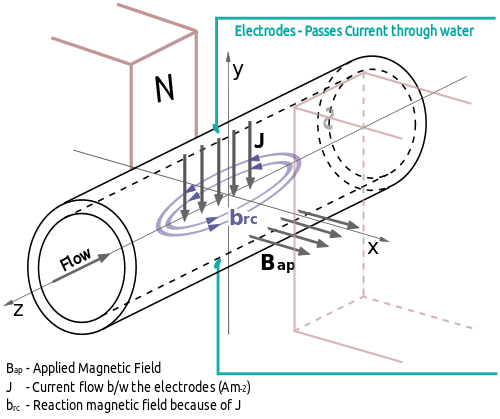Electromagnetic pump
| Electromagnetism |
|---|
 |
|
|
An electromagnetic pump is a pump that moves liquid metal (or any electrically conductive liquid) using electromagnetism. A magnetic field is set at right angles to the direction the liquid moves in, and a current is passed through it. This causes an electromagnetic force that moves the liquid.
Applications include pumping liquid metal through a cooling system.
Working Principle

A magnetic field (brc) always exists around the current (I) carrying conductor. When this current carrying conductor is subjected to external magnetic field (Bap), the conductor experiences a force perpendicular to the direction of I and Bap. This is because, the magnetic field produced by the conductor and the applied magnetic field try to align with each other. The similar effect one can see between any two magnets.
The same principle is used in electromagnetic pump. The current is supplied through a conducting liquid. And two permanent magnets are arranged to produce magnetic field Bap as shown in the figure. The supplied current has current density (J) and the magnetic field associated with this current can be called as 'Reaction magnetic Field (brc)'. The two magnetic fields Bap and brc try to align with each other. This causes the mechanical motion of the fluid.
See also
References
Bibliography
R. S. Baker Handbook of Electromagnetic pump technology
External links
- demo
- Analysis and Design of Electromagnetic Pump
- The Einstein-Szilard Electromagnetic Pump -American Physics Society